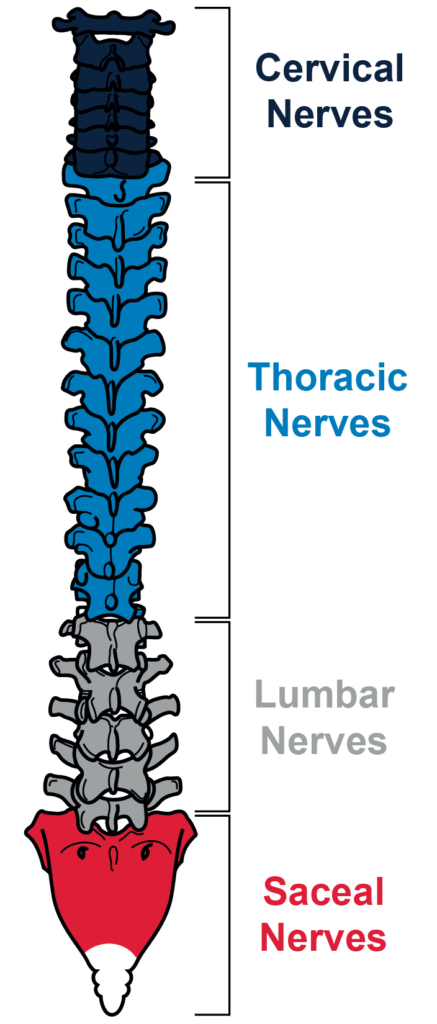Spinal Cord Injury 101: Spinal Cord Injury Levels and What They Mean

What is a Spinal Cord Injury?
A spinal cord injury (SCI) is damage to part of the spinal cord or nerves that sends and receives signals from the brain to the rest of the body. In most spinal cord injury cases, the spinal cord remains intact, but the damage is extensive enough to result in loss of function.
Loss of Function may include:
- Bladder and bowel
- Breathing
- Heart Rate
- Metabolism
- Muscle Movement
- Reflexes
- Sensation
- Mobility
Common Causes of Spinal Cord Injuries
Levels of Injury Explained
The spine consists of vertebrae grouped into four different sections – cervical, thoracic, lumbar, and sacral. Spinal cord levels of injury are named according to the corresponding vertebrae. Injuries sustained higher on the spine will be more severe and result in a higher loss of function.
Cervical Nerves
The cervical nerves play a critical role in supporting the head and allowing head and neck movement. Containing seven vertebrae from C1 – C7, spinal cord injuries to these vertebrae will result in tetraplegia/quadriplegia.
Thoracic Nerves
The thoracic nerves run from the shoulder level to the lower abdomen and include twelve vertebrae from T1 – T12. Spinal cord injuries to the thoracic nerve typically result in paraplegia, paralysis of the legs and lower body.

Lumbar Nerves
The lumbar nerves have five vertebrae, L1-L5, that are responsible for supporting the upper body’s weight and facilitating torso and leg movement. Injuries sustained to the lumbar area generally result in some loss of mobility and sensation in the hips and legs. Lumbar injuries commonly occur due to car accidents, falls, and violence.
Sacral Nerves
While the spinal cord ends at the lumbar nerves, there are sacral nerves between the lumbar nerves and the tailbone. The sacral nerves, S1 – S5, control pelvic organs such as the bladder, bowel, and sex organs. The prognosis for sacral injuries is more favorable than those sustained higher on the spinal cord, with most individuals being able to walk.
Classifications of Spinal Cord Injuries
Complete Spinal Cord Injury
Incomplete Spinal Cord Injury
ASIA Impairment Scale
The American Spinal Injury Association (ASIA) established a grading system for spinal cord injuries called the ASIA Impairment Scale. The grading system uses letters A through E to describe the severity of spinal cord injuries and indicates how much sensation a person feels after light touch.
- Grade A: Complete spinal cord injury. No sensation or motor function below the point of injury.
- Grade B: Incomplete sensory function with complete loss of motor function below the point of injury.
- Grade C: Incomplete motor function with some movement, but fewer than half of the muscle groups can lift against gravity with a full range of motion.
- Grade D: Incomplete motor function with more than half of the muscle groups able to lift against gravity.
- Grade E: Normal sensation and motor function.
Achieving Independence After SCI with HR HealthCare Catheters
Although there is no cure for spinal cord injuries, the outlook for those affected by SCIs has improved dramatically over the years. At HR HealthCare, we are devoted to improving the quality of life of individuals who have suffered spinal cord injuries/diseases. If you are searching for effortless, worry-free self-catheterization options that fit your lifestyle, we welcome you to try our HR HealthCare no-touch closed system catheters.